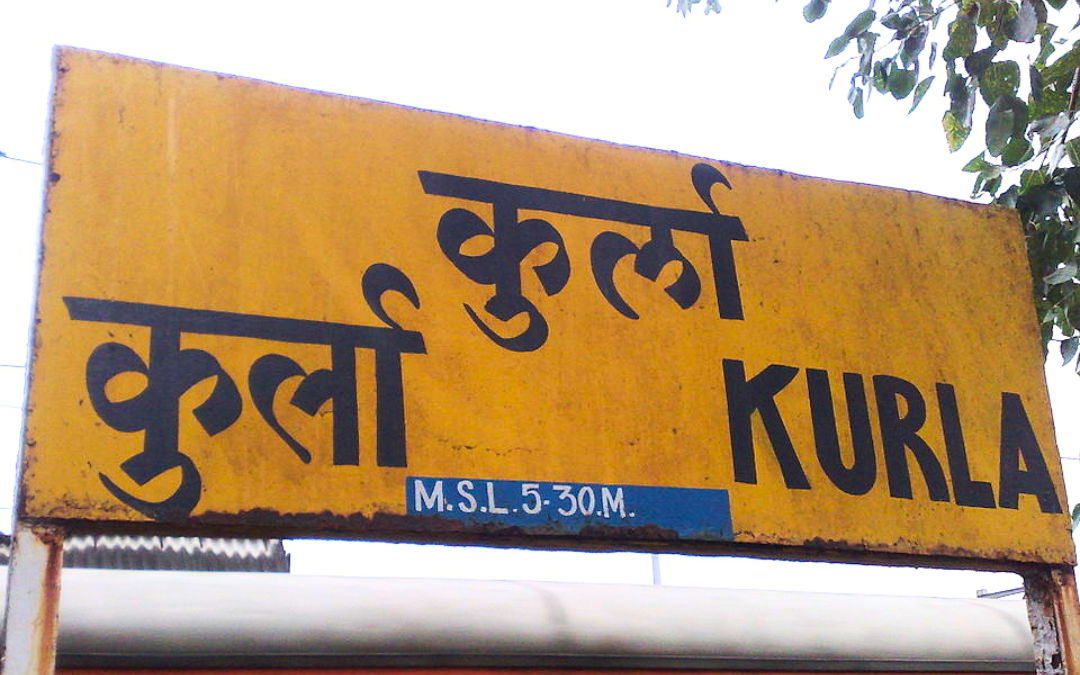In the 1970s there was a man who lived under a bridge in the city where I grew up. Everyone knew him as the “Madman of Kurla Bridge”. He was no more than in his late thirties, had long Rastafarian matted locks, an unkempt beard, and dried on mud, caked all over his tattered clothes and exposed skin. He reeked of filth and feces, talked incessantly to himself, and would constantly break into peals of hearty, audible laughter.
We often saw this man when we drove across Kurla bridge. He roamed the area aimlessly, laughing loudly, talking to himself, often pointing at nothing. He never approached cars because he was always busy amusing himself with his own thoughts, but I must admit that as a little girl I was scared of him even from a distance. This led me to make sure our car doors were always locked around Kurla bridge especially during a traffic jam or at a red light. Yet, despite my palpable fear of the man I always hoped that I would see him, the ambivalence ever evading my comprehension. Here I was mortally afraid of this ogre-like figure whose behavior was anything but comfortable, and yet seeing him would mean he was still alive. Somehow, I never wanted anything bad to happen to him. Safe to say the two overarching emotions I felt for him were fear and pity and in so feeling, I was not much different from the rest of the people that encountered him. There were those that lay down leftover food for him (from a safe distance), others who threw money at him (mostly coins) although he never begged for alms, and still others who poked fun at him laughing, often to his face. The last I saw of him was in my early-twenties and I do not know what eventuality befell his life, but his image has always stayed with me, my protective feelings towards him never subsiding. Ridiculous as it may sound, I felt as if re-visiting my feelings for him would ensure his safety and well-being wherever he was.
Some years passed, by which time I was living stateside in a new life far away from Kurla bridge and its Madman. During one of my many visits back home, the topic of the Madman of Kurla Bridge came up at a dinner party and it was there that I came to find out that the Madman had been a Physician in a former iteration of his life. Nobody at the party knew him personally while he was a practicing Physician or knew what led to his condition, but that did not stop them from freely offering their opinions, judgements, theories, anecdotes, and hypotheticals – all of them reeking of eventual pity for the man, labelling life as unpredictable, and fearing fate as something to be reckoned with. Sitting alone in my room later that night the Madman discussion played in my thoughts like a movie, the dominant thought being the chasmic dichotomy of his titles: Physician. Madman. From my introduction to this strange and scary person as a little girl frantically checking the lock on her car doors, to his behavior which although consistent and predictable felt anything but, right up to his treatment at the hands of others based on their perception of him, it all just gripped me.
It so happened that at the time I was reading Eckhart Tolle’s book “A New Earth” (2005). In the book Tolle relates a story about his encounter with a woman on the London tube who was audibly having an angry conversation with herself – both sides of the dialogue provided by her. To quote Tolle himself, “…”I hope I don’t end up like her …. Oh my God, I am already like her…. Wasn’t my mind as incessantly active as hers? … She thought out loud. I thought – mostly – in my head. If she was mad, then everyone was mad, including myself.” (p.33). It took me no more than a few minutes to connect the dots between my thoughts from the Madman discussion at the party to this part of Tolle’s book. I sat alone in the still of that night, quietly amazed at the similarity between Tolle’s lady from the tube and The Madman of Kurla Bridge, finding myself decidedly joyful that the similarity lent legitimacy to the man who, for years, had been little more than a pitiful happenstance for anybody who was not him.
The connected dots revealed within me a sense of private vindication for the Physician-Madman, for who could say with certainty that he was mad and the rest of us sane? What if… just what if, he was the one who had been sane all along? He could very well have been laughing at us, mired in our daily existence, judgmentally competing with others, worrying about things we can or cannot control while trying to determine which was which, and believing that our way of being was ‘right’ (a word that suddenly felt frivolous and cheap). Meanwhile, this “brilliant” Madman worried about nothing, laughed every day, cared zero about who had what, could not care less about his future (or how he was being perceived in the present) and who, for all practical purposes, had found the holy grail of pure joy no matter his circumstance.
Suddenly my words “roaming the area aimlessly, laughing loudly, talking to himself, often pointing to nothing in particular” which had thus far been little more than an observation, became a bar raised, and the next logical question echoed in my head… “Who’s crazy now?”
A few more decades went by and one Sunday in the lobby of my church in the United States, I saw a larger-than-life painting of the Madman. Utterly stupefied (how was this even possible?!) I walked up to it, and as that unmistakable face towered above me, I read the details of its origin. Turns out it was an artist’s rendering of the face of — wait for it — Jesus Christ.
Go figure.
Tolle, E. (2005). A New Earth: Awakening to your life’s purpose. London, England. Penguin Group.


